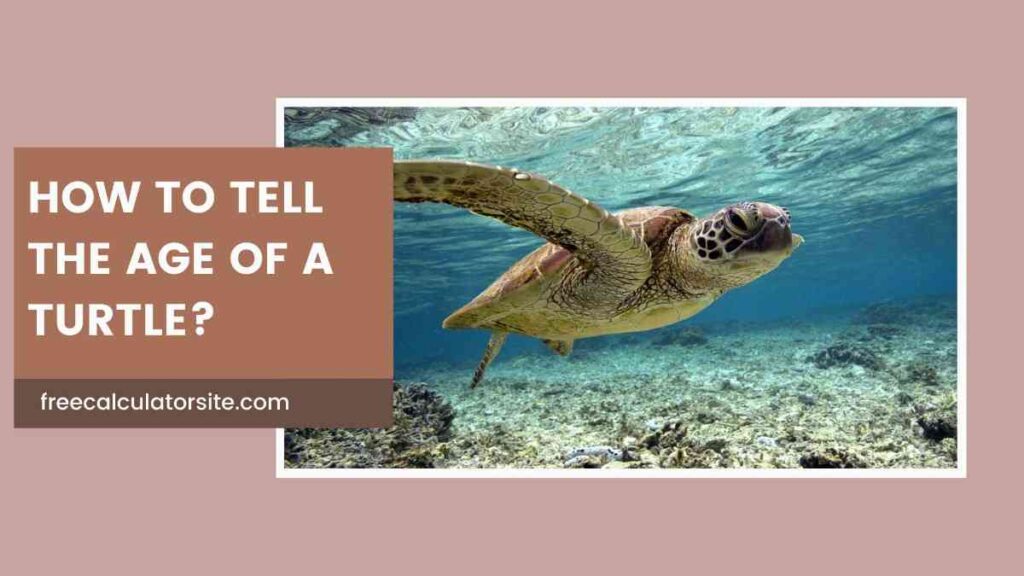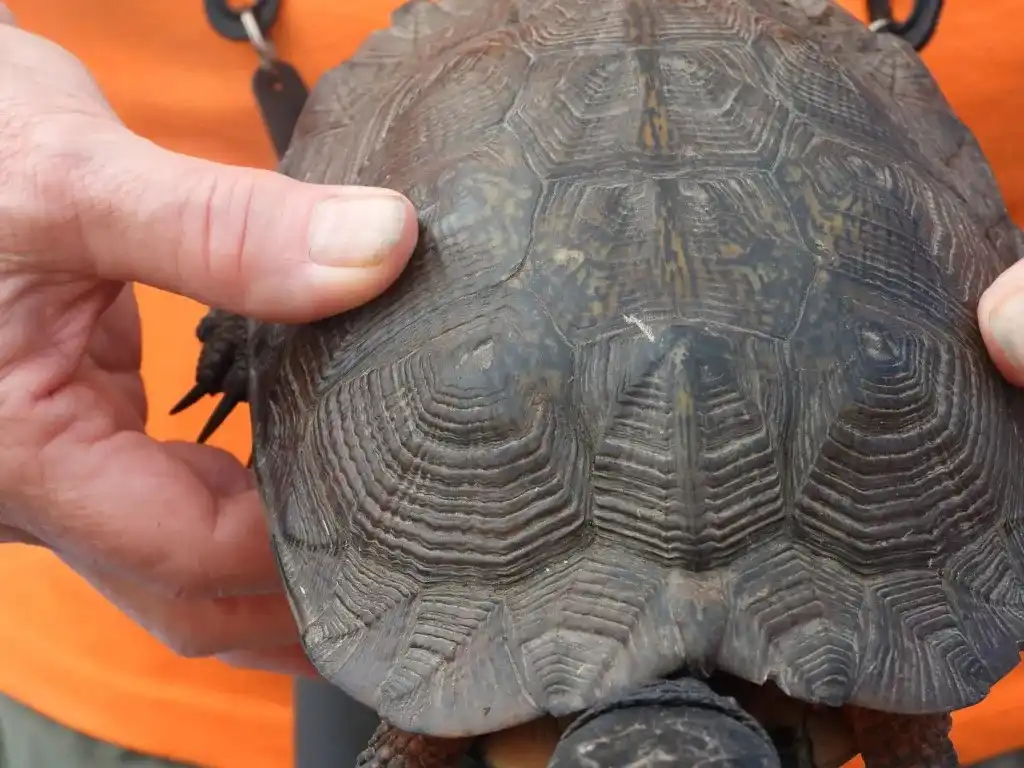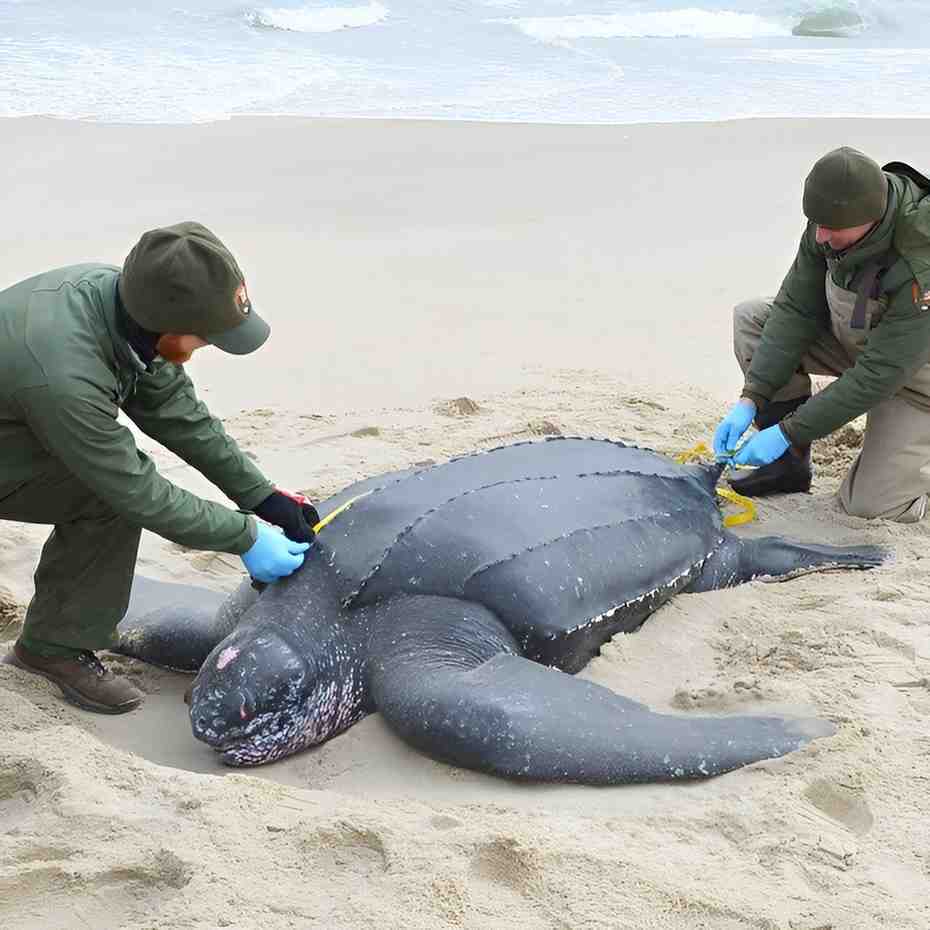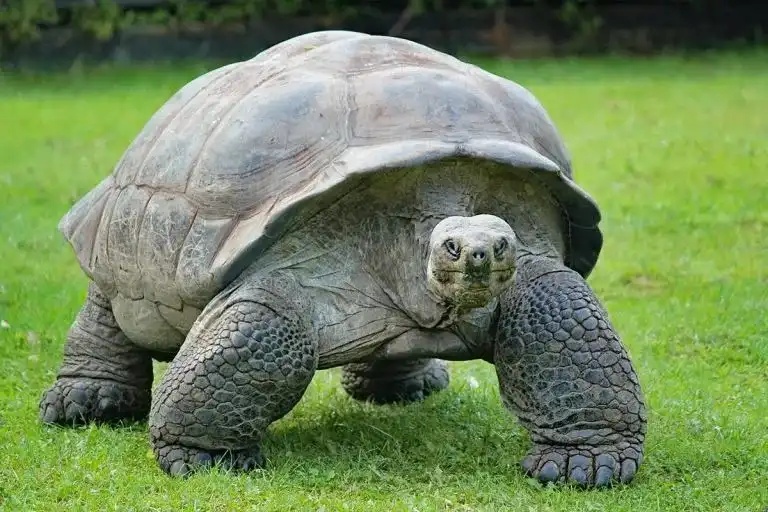Last updated on August 11th, 2024 at 01:08 am

Turtles are among the most ancient and fascinating creatures on Earth.
Their slow, steady pace and long lifespans have made them symbols of endurance and resilience. But have you ever wondered how to tell the age of a turtle?
Unlike many animals, turtles don’t have a straightforward way to determine their age. They don’t grow teeth that can be counted, and they don’t have rings like trees.
However, there are several methods you can use to estimate a turtle’s age, ranging from physical examination to understanding their lifestyle and habits.
In this article, we will explore these methods in detail, providing you with a comprehensive guide on how to tell the age of a turtle.
1. Understanding Turtle Biology

Before diving into the methods for determining a turtle’s age, it’s essential to understand some basic biology.
Turtles are reptiles, and their growth rate is influenced by several factors, including species, environment, diet, and overall health.
Unlike mammals, turtles do not stop growing once they reach adulthood; they continue to grow throughout their lives, although at a much slower rate as they age.
Shell Development and Structure
A turtle’s shell is one of its most distinguishing features.
It’s made up of two parts: the upper carapace and the lower plastron. The shell is not just a protective covering; it’s an integral part of the turtle’s skeleton, including the ribs and spine.
The carapace and plastron are covered by scutes, which are plates made of keratin—the same material found in human nails.
These scutes play a crucial role in determining the turtle’s age.
2. Counting Growth Rings on the Scutes

One of the most common methods for estimating a turtle’s age is by counting the growth rings on the scutes of its carapace.
These rings are somewhat analogous to the rings in a tree trunk, which can indicate the tree’s age.
How Growth Rings Form
As turtles grow, their scutes expand, forming new layers or rings.
These rings are created due to seasonal changes in growth rates—turtles grow more during the warmer months when food is abundant, leading to wider rings, and less during colder months, resulting in narrower rings.
By counting the number of rings, you can estimate the turtle’s age. However, this method is not foolproof.
The number of rings can vary based on environmental conditions, diet, and species, and it becomes less reliable as the turtle ages because the growth rate slows down and the rings become harder to distinguish.
Steps to Count Growth Rings
- Examine the Carapace: Gently pick up the turtle and examine the scutes on its carapace. You’ll notice the rings around the edge of each scute.
- Count the Rings: Count the number of rings on a single scute. Some people prefer to count rings on several scutes and take an average for a more accurate estimate.
- Estimate the Age: Multiply the number of rings by the estimated number of growth periods per year. For many turtles, this is about one or two periods per year, so a turtle with ten rings could be approximately five to ten years old.
3. Measuring the Turtle’s Size

Another method to estimate a turtle’s age is by measuring its size.
Since turtles grow throughout their lives, larger turtles are generally older than smaller ones.
However, this method is less accurate because growth rates can vary widely depending on species, environment, and diet.
Steps to Measure the Turtle
- Use a Ruler or Caliper: Measure the length of the turtle’s carapace from the front to the back along the midline. This measurement is known as the straight carapace length (SCL).
- Compare with Species Growth Charts: Once you have the measurement, compare it with species-specific growth charts, which can give you a rough estimate of the turtle’s age. These charts are usually available from reptile care guides or scientific publications.
4. Observing Physical Characteristics
As turtles age, they undergo physical changes that can provide clues about their age.
Shell Wear and Tear
Older turtles often have more worn or smooth shells due to years of friction with rocks, water, and other surfaces.
In contrast, younger turtles typically have sharper, more defined scutes.
Skin Condition
The skin of an older turtle may appear rougher and more wrinkled compared to the smoother skin of a younger turtle.
In aquatic turtles, older individuals might show more signs of algae growth on their shells and skin due to longer exposure to the environment.
Eye Condition
In some turtle species, the eyes can also give clues about age.
Older turtles might have cloudier eyes or a more pronounced third eyelid, known as the nictitating membrane.
5. Estimating Age Based on Species

Different turtle species have different growth rates and life expectancies, which can influence how you estimate their age.
For example, a box turtle might live for 40-50 years, while a sea turtle can live for over 100 years.
Knowing the specific species of your turtle can help you use the appropriate methods and comparisons to estimate its age.
6. The Role of Genetics and Environment
It’s important to note that genetics and environment play significant roles in a turtle’s growth and lifespan.
Turtles in captivity, with access to abundant food and stable conditions, may grow faster and live longer than wild turtles.
Conversely, turtles in the wild might face predators, diseases, and food scarcity, all of which can affect their growth and longevity.
7. The Challenges of Aging Turtles

While the methods described above can provide estimates, aging a turtle is not an exact science.
Factors like diet, habitat, health, and species all contribute to the variability in growth and development.
For example, a well-fed turtle in captivity might have more growth rings than a wild turtle of the same age, leading to an overestimation of its age.
Moreover, as turtles age, their growth rings can become harder to count, and the differences in physical characteristics between an older and a very old turtle might be minimal.
This makes it difficult to determine the precise age of an older turtle.
8. The Importance of Knowing a Turtle’s Age
Understanding a turtle’s age can be important for several reasons.
For pet owners, knowing the age of their turtle can help in providing proper care, such as adjusting the diet or environment to suit the turtle’s stage of life.
For conservationists, determining the age of turtles in the wild can provide valuable data on population dynamics and the health of ecosystems.
Conclusion
Telling the age of a turtle is a fascinating process that combines observation, knowledge of biology, and sometimes a bit of detective work.
While it’s not always possible to determine the exact age, the methods described in this article can help you make a reasonable estimate.
Whether you’re a turtle enthusiast, a pet owner, or a conservationist, understanding how to age a turtle can deepen your appreciation for these remarkable creatures and contribute to their well-being and conservation.

Sayantika Karmakar provides expert insights on financial calculators in her blog posts.
